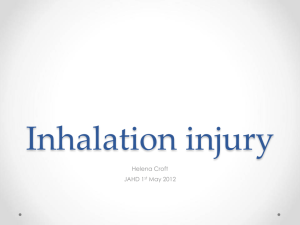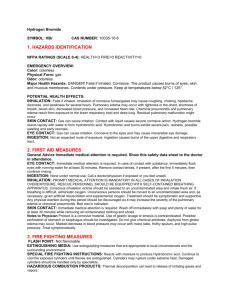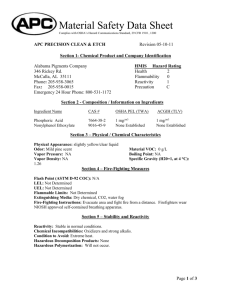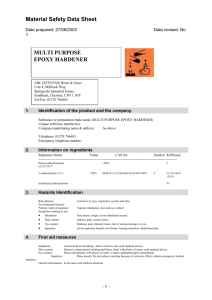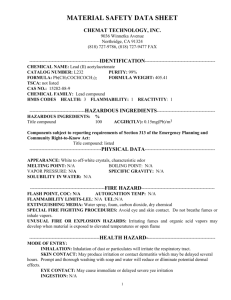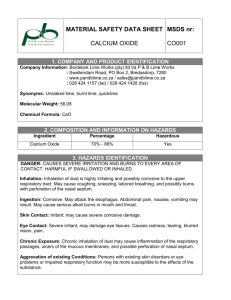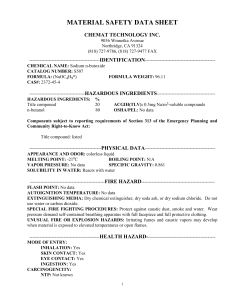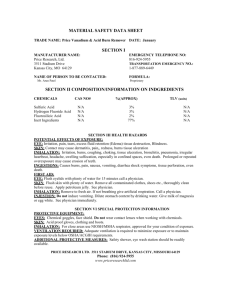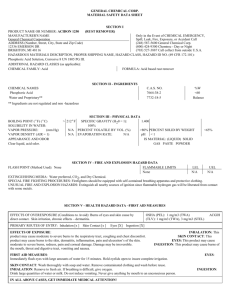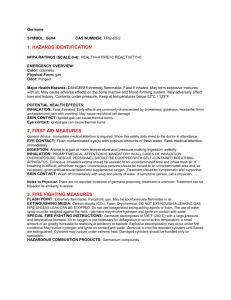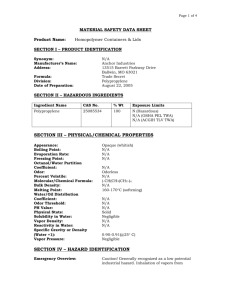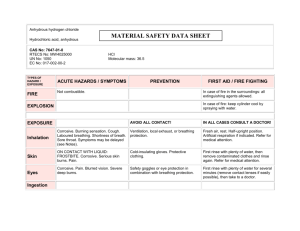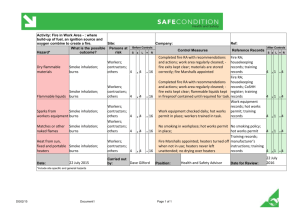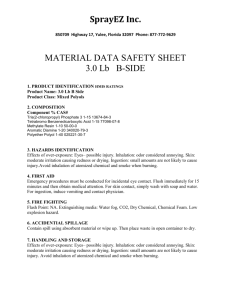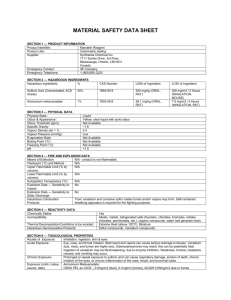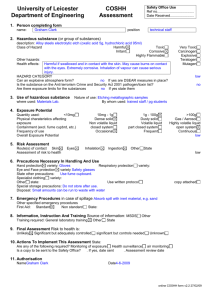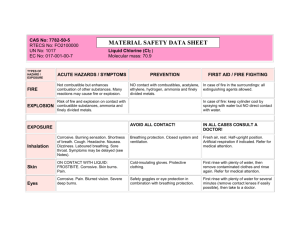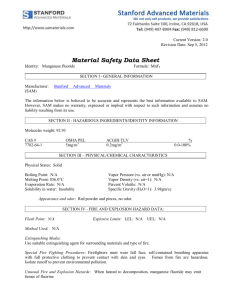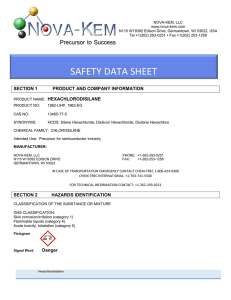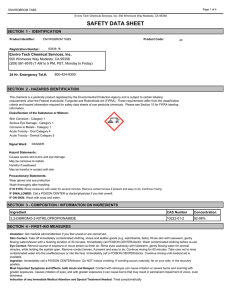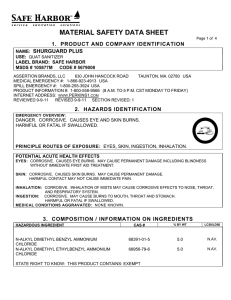Ammonia SYMBOL: NH3 CAS NUMBER: 7664-41
advertisement
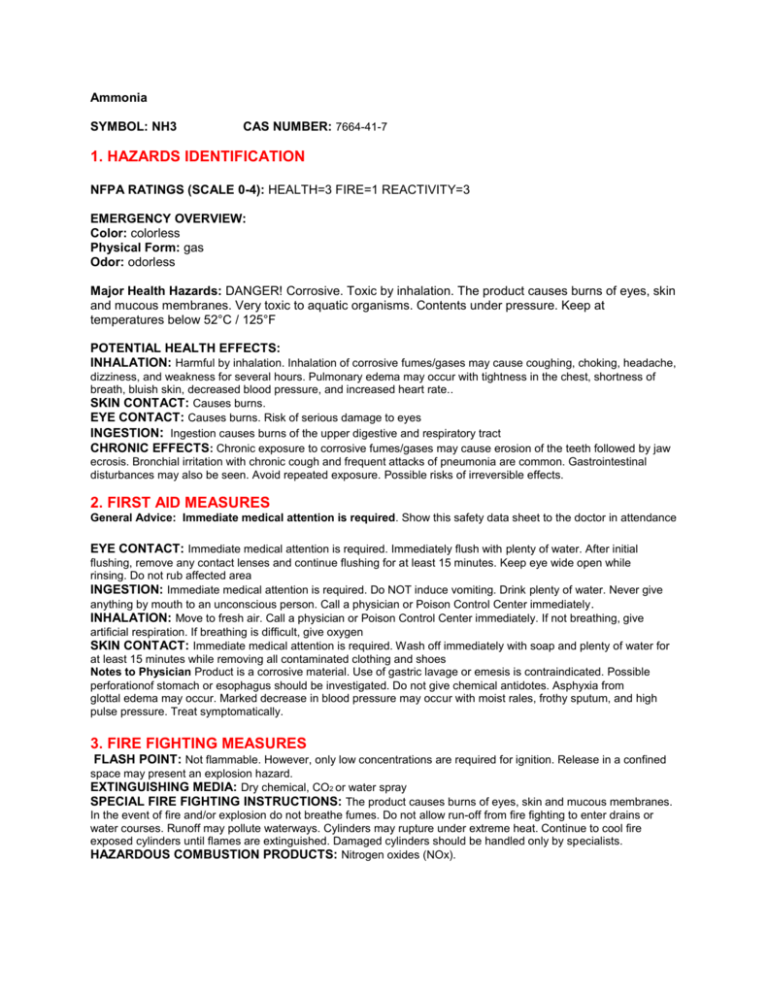
Ammonia SYMBOL: NH3 CAS NUMBER: 7664-41-7 1. HAZARDS IDENTIFICATION NFPA RATINGS (SCALE 0-4): HEALTH=3 FIRE=1 REACTIVITY=3 EMERGENCY OVERVIEW: Color: colorless Physical Form: gas Odor: odorless Major Health Hazards: DANGER! Corrosive. Toxic by inhalation. The product causes burns of eyes, skin and mucous membranes. Very toxic to aquatic organisms. Contents under pressure. Keep at temperatures below 52°C / 125°F POTENTIAL HEALTH EFFECTS: INHALATION: Harmful by inhalation. Inhalation of corrosive fumes/gases may cause coughing, choking, headache, dizziness, and weakness for several hours. Pulmonary edema may occur with tightness in the chest, shortness of breath, bluish skin, decreased blood pressure, and increased heart rate.. SKIN CONTACT: Causes burns. EYE CONTACT: Causes burns. Risk of serious damage to eyes INGESTION: Ingestion causes burns of the upper digestive and respiratory tract CHRONIC EFFECTS: Chronic exposure to corrosive fumes/gases may cause erosion of the teeth followed by jaw ecrosis. Bronchial irritation with chronic cough and frequent attacks of pneumonia are common. Gastrointestinal disturbances may also be seen. Avoid repeated exposure. Possible risks of irreversible effects. 2. FIRST AID MEASURESGeneral Advice: Immediate medical attention is required. Show this safety data sheet to the doctor in attendance EYE CONTACT: Immediate medical attention is required. Immediately flush with plenty of water. After initial flushing, remove any contact lenses and continue flushing for at least 15 minutes. Keep eye wide open while rinsing. Do not rub affected area INGESTION: Immediate medical attention is required. Do NOT induce vomiting. Drink plenty of water. Never give anything by mouth to an unconscious person. Call a physician or Poison Control Center immediately . INHALATION: Move to fresh air. Call a physician or Poison Control Center immediately. If not breathing, give artificial respiration. If breathing is difficult, give oxygen SKIN CONTACT: Immediate medical attention is required. Wash off immediately with soap and plenty of water for at least 15 minutes while removing all contaminated clothing and shoes Notes to Physician Product is a corrosive material. Use of gastric lavage or emesis is contraindicated. Possible perforationof stomach or esophagus should be investigated. Do not give chemical antidotes. Asphyxia from glottal edema may occur. Marked decrease in blood pressure may occur with moist rales, frothy sputum, and high pulse pressure. Treat symptomatically. 3. FIRE FIGHTING MEASURES----------FLASH POINT: Not flammable. However, only low concentrations are required for ignition. Release in a confined space may present an explosion hazard. EXTINGUISHING MEDIA: Dry chemical, CO2 or water spray SPECIAL FIRE FIGHTING INSTRUCTIONS: The product causes burns of eyes, skin and mucous membranes. In the event of fire and/or explosion do not breathe fumes. Do not allow run-off from fire fighting to enter drains or water courses. Runoff may pollute waterways. Cylinders may rupture under extreme heat. Continue to cool fire exposed cylinders until flames are extinguished. Damaged cylinders should be handled only by specialists. HAZARDOUS COMBUSTION PRODUCTS: Nitrogen oxides (NOx).
